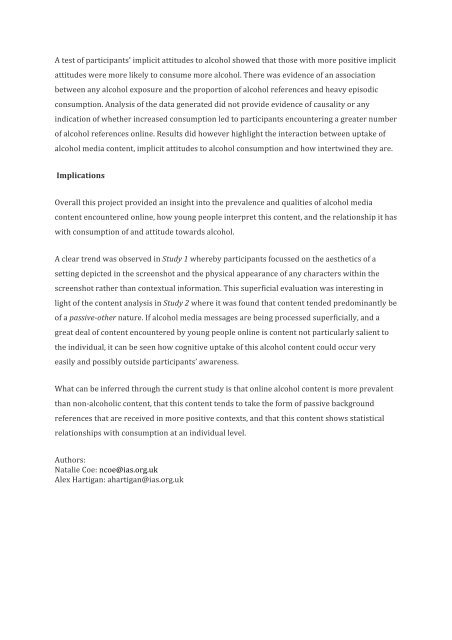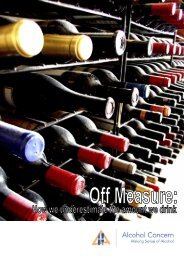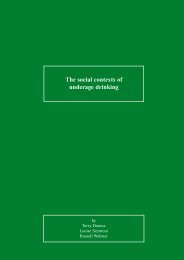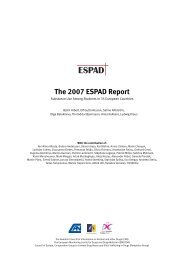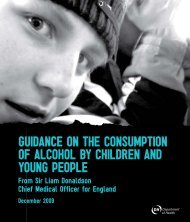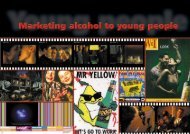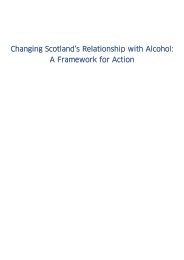Download Summary Version pdf 97kb - IAS
Download Summary Version pdf 97kb - IAS
Download Summary Version pdf 97kb - IAS
You also want an ePaper? Increase the reach of your titles
YUMPU automatically turns print PDFs into web optimized ePapers that Google loves.
A test of participants' implicit attitudes to alcohol showed that those with more positive implicit attitudes were more likely to consume more alcohol. There was evidence of an association between any alcohol exposure and the proportion of alcohol references and heavy episodic consumption. Analysis of the data generated did not provide evidence of causality or any indication of whether increased consumption led to participants encountering a greater number of alcohol references online. Results did however highlight the interaction between uptake of alcohol media content, implicit attitudes to alcohol consumption and how intertwined they are. Implications Overall this project provided an insight into the prevalence and qualities of alcohol media content encountered online, how young people interpret this content, and the relationship it has with consumption of and attitude towards alcohol. A clear trend was observed in Study 1 whereby participants focussed on the aesthetics of a setting depicted in the screenshot and the physical appearance of any characters within the screenshot rather than contextual information. This superficial evaluation was interesting in light of the content analysis in Study 2 where it was found that content tended predominantly be of a passive-‐other nature. If alcohol media messages are being processed superficially, and a great deal of content encountered by young people online is content not particularly salient to the individual, it can be seen how cognitive uptake of this alcohol content could occur very easily and possibly outside participants’ awareness. What can be inferred through the current study is that online alcohol content is more prevalent than non-‐alcoholic content, that this content tends to take the form of passive background references that are received in more positive contexts, and that this content shows statistical relationships with consumption at an individual level. Authors: Natalie Coe: ncoe@ias.org.uk Alex Hartigan: ahartigan@ias.org.uk


